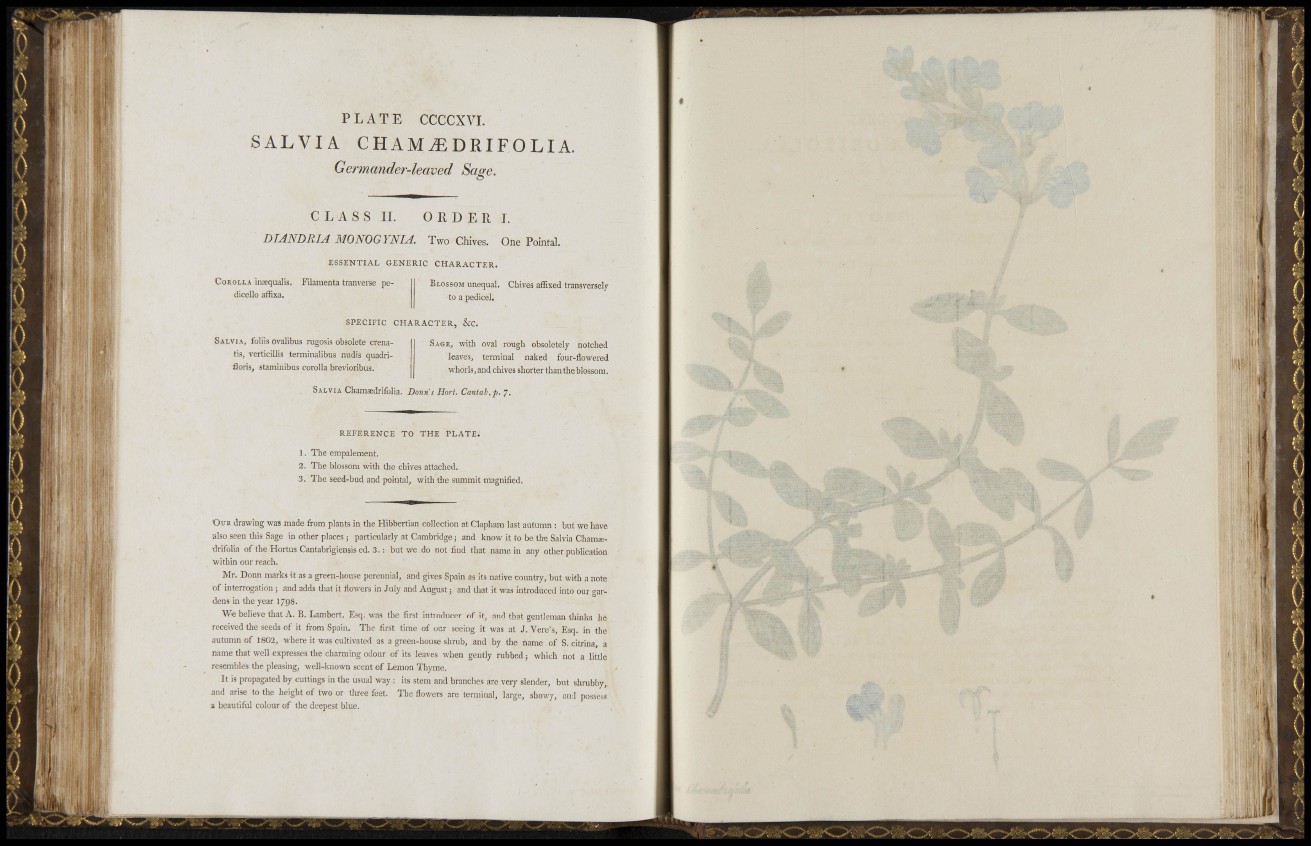
P L A T E CCCCXVI.
S A L V I A CHAMtEDRIFOLIA.
Germander-leaved Sacre. o
C L A S S II. ORDER I.
DIANDRIA MONOGYNIA. Two Chives. One Poinfal.
E S S E N T I A L GENERIC CHARACTER.
COROLLA inaequalis. Filamenta tranverse pedicello
affixa.
BLOSSOM unequal. Chives affixed transversely
to a pedicel.
S P E C I F I C CHARACTER, &C.
SALVIA, folils ovalibus rugosis obsolete crenatis,
verticillis terminalibus nudis quadriilorisj
staminibus corolla brevioribus.
SAGE, with oval rough obsoletely notched
leaves, terminal naked four-flowered
whorls, and chives shorter than the blossom.
SALVIA Chamsedrifolia. Bonn's Hort. Cantali, p. 7.
R E F E R E N C E TO THE PLATEi
1. The empalement.
2. The blossom with the chives attached.
3. The seed-bud and pointai, with tlie summit magnified.
OUR drawing was made from plants in the Hibbertian collection at Clapham last autumn : but we have
also seen tliis Sage in other places ; particularly at Cambridge; and know it to be the Salvia Chama:-
drifolia of the Hortus Cantabrigiensis ed. 3. : but we do not find that name in any other publication
within our reach.
Mr. Donn marks it as a green-house perennial, and gives Spain as its native country, but with a note
of interrogation ; and adds that it flowers in July and August; and that it was introduced into our gardens
in the year 1798.
We believe that A. B. Lambert, Esq. was the first introducer of it, and that gentleman thinks he
received the seeds of it from Spain. The first time of our seeing it was at J. Vere's, Esq. in the
autumn of 1802, where it was cultivated as a green-house shrub, and by the name of S. dtrina, a
name that well expresses the charming odour of its leaves when gently rubbed; which not a little
resembles the pleasing, well-known scent of Lemon Thyme.
It is propagated by cuttings in tlie usual way : its stem and branches are very slender, but shrubby,
and arise to the height of two or three feet. The flowers are terminal, large, showy, and possess
a beautiful colour of the deepest blue.
0 • ^ ii,;